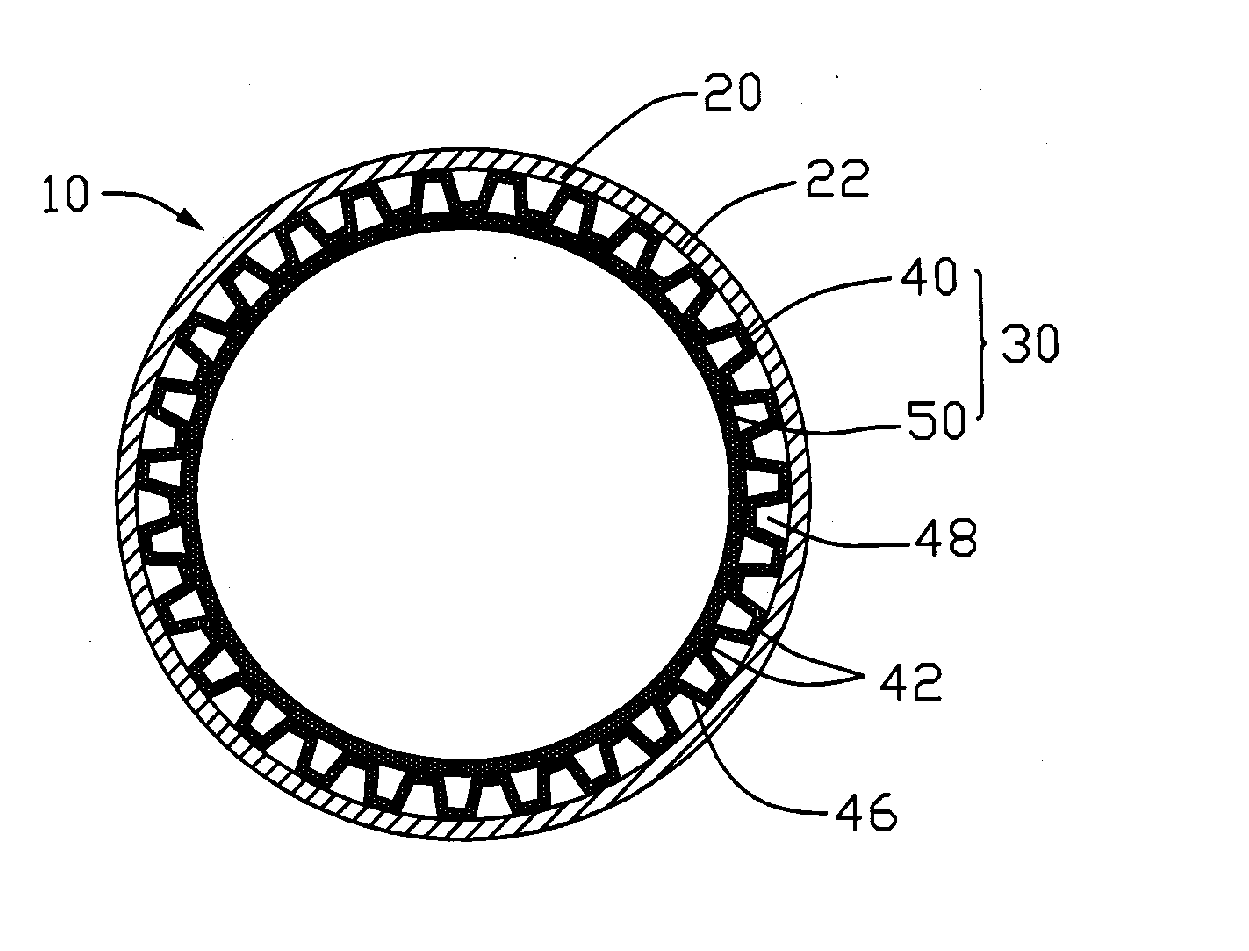Heat pipe with wick structure of screen mesh
a technology of heat pipe and wick, which is applied in the direction of indirect heat exchangers, lighting and heating apparatus, etc., can solve the problems of reducing the speed of condensed working fluid, limiting the heat transfer performance of heat pipes, and not always the best way to choose screen meshes with small pores, etc., to reduce the flow resistance of condensed fluid and large capillary pressure
- Summary
- Abstract
- Description
- Claims
- Application Information
AI Technical Summary
Benefits of technology
Problems solved by technology
Method used
Image
Examples
Embodiment Construction
[0020] Referring to FIG. 1, a heat pipe 10 according to a preferred embodiment of the present invention comprises a hollow pipe body 20 and a screen mesh 30 disposed on an inner wall 22 of the pipe body 20. The heat pipe 10 comprises an evaporating section and a condensing section at respective opposite ends thereof, and an adiabatic section located between the evaporating section and the condensing section. The heat pipe 10 is vacuumed and two ends of the heat pipe 10 are sealed.
[0021] The pipe body 20 is made of high heat conductivity material such as copper or copper alloys. The screen mesh 30 has a plurality of pores and is saturated with a working fluid (not shown). The working fluid may be water, alcohol or other material having a low boiling point; thus, the working fluid can easily evaporate to vapor during operation when the evaporating section receives heat from a heat-generating electronic device, such as a CPU.
[0022] The screen mesh 30 comprises a wave layer 40 and a p...
PUM
 Login to View More
Login to View More Abstract
Description
Claims
Application Information
 Login to View More
Login to View More - R&D
- Intellectual Property
- Life Sciences
- Materials
- Tech Scout
- Unparalleled Data Quality
- Higher Quality Content
- 60% Fewer Hallucinations
Browse by: Latest US Patents, China's latest patents, Technical Efficacy Thesaurus, Application Domain, Technology Topic, Popular Technical Reports.
© 2025 PatSnap. All rights reserved.Legal|Privacy policy|Modern Slavery Act Transparency Statement|Sitemap|About US| Contact US: help@patsnap.com



